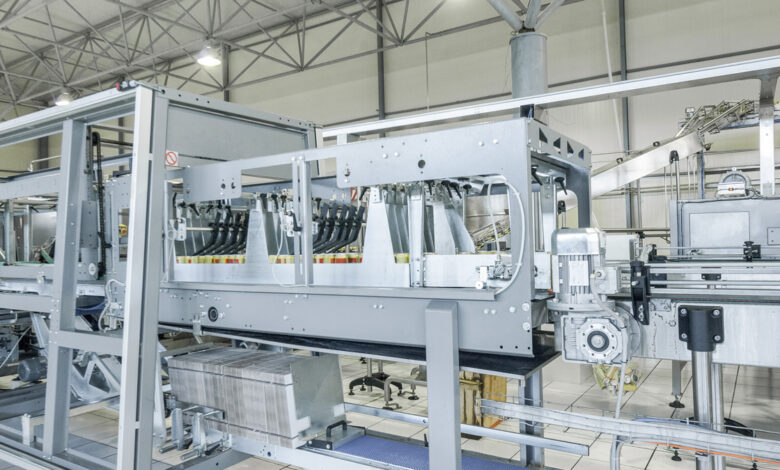Understanding the Role of Danfoss Drives in Industrial Applications

In the realm of industrial applications, choosing the right equipment can make a significant difference in the overall efficiency and productivity of operations. One crucial component that plays a vital role in optimising industrial processes is the Danfoss controller. With its advanced technology and unmatched performance, Danfoss drives have become an indispensable asset in the industrial landscape.
Danfoss drives are known for their exceptional control capabilities, ensuring precision and accuracy in various industrial applications. Whether it’s controlling the speed of motors, managing energy consumption, or regulating process parameters, the right Danfoss controller can provide the necessary control and monitoring functionalities. The importance of selecting the appropriate Danfoss controller cannot be overstated, as it directly impacts the performance, reliability, and longevity of industrial equipment.
To optimise industrial processes, it is crucial to consider several factors when choosing a Danfoss controller. First and foremost, understanding the specific requirements of the application is essential. Different industrial processes demand different control strategies, and selecting a Danfoss drive that aligns with these requirements is vital. Factors such as motor power, voltage, current, and environmental conditions should be carefully evaluated to ensure compatibility and optimal performance.
Another critical consideration is the scalability and flexibility of the Danfoss controller. Industrial processes often evolve and expand over time, requiring equipment that can adapt to changing demands. Choosing a Danfoss drive that offers modular configurations and expandable features allows for easy integration and future-proofing. This scalability enables industrial operations to grow and evolve without the need for extensive equipment replacements or costly upgrades.
Additionally, it is essential to consider the reliability and durability of the Danfoss controller. Industrial environments can be harsh, with extreme temperatures, vibrations, and other challenging conditions. Opting for a robust and rugged Danfoss drive that can withstand these conditions ensures uninterrupted operation and minimises downtime. Reliability is a critical factor in industrial applications, as any failure or interruption can lead to significant financial losses and decreased productivity.
Best Practices for Optimising Industrial Processes with Danfoss Solutions
Once the appropriate Danfoss controller has been selected, implementing best practices is vital to maximise its potential and optimise industrial processes. Here are some key practices for achieving optimal performance with Danfoss solutions:
- System Integration: Integrating the Danfoss drive seamlessly into the existing industrial system is crucial. This integration ensures smooth communication and coordination between different components, allowing for efficient control and monitoring.
- Parameter Optimization: Fine-tuning the parameters of the Danfoss controller according to the specific application requirements is essential. This optimization allows for precise control, minimising energy consumption, and maximising overall efficiency.
- Regular Maintenance: Regular maintenance and inspections are necessary to ensure the longevity and reliability of the Danfoss drive. Following the manufacturer’s recommended maintenance schedule and promptly addressing any issues or abnormalities can prevent unexpected failures and costly repairs.
- Monitoring and Data Analysis: Utilising the advanced monitoring and data analysis capabilities of the Danfoss controller can provide valuable insights into the performance of industrial processes. Analysing data trends and identifying areas for improvement allows for continuous optimization and operational efficiency.
Maximising ROI: Cost-Benefit Analysis of Danfoss Solutions
Investing in Danfoss solutions can yield significant returns on investment (ROI) for industrial operations. By optimising processes, reducing energy consumption, and improving overall efficiency, Danfoss drives can contribute to substantial cost savings and increased profitability. Conducting a cost-benefit analysis before implementing Danfoss solutions can help determine the potential ROI and make informed decisions.
When evaluating the cost-benefit of Danfoss solutions, it is essential to consider factors such as initial investment, energy savings, maintenance costs, and potential productivity gains. While the upfront investment may seem significant, the long-term benefits of improved efficiency and reduced downtime can outweigh the initial costs. By accurately estimating the potential savings and increased productivity, industrial operators can make a well-informed decision regarding the adoption of Danfoss solutions.
Conclusion: Empowering Your Industrial Operations with Danfoss
In conclusion, understanding the role of Danfoss drives in industrial applications is crucial for optimising processes and maximising operational efficiency. By choosing the right Danfoss controller and implementing best practices, industrial operators can achieve precision control, energy savings, and increased productivity. Conducting a cost-benefit analysis allows for informed decision-making and ensures maximum ROI. With their advanced technology and reliability, Danfoss solutions empower industrial operations, leading to enhanced performance, reduced costs, and improved profitability. Embrace the power of Danfoss drives and unleash the true potential of your industrial processes.




